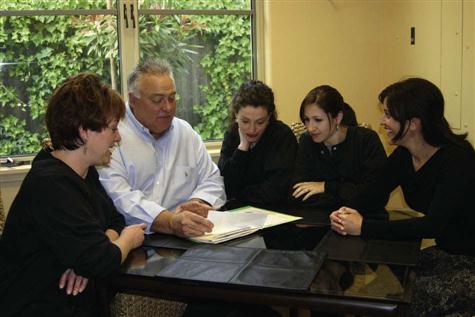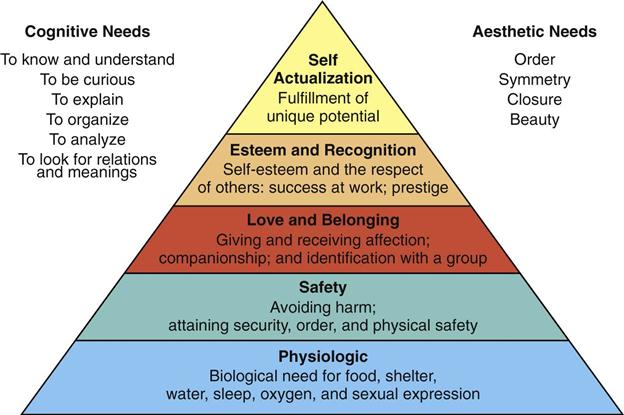Communication in the Dental Office
Learning Outcomes
On completion of this chapter, the student will be able to achieve the following objectives:
• Pronounce, define, and spell the Key Terms.
• Describe the type of relationship the patient and the dental team should have.
• Describe good phone courtesy.
• Describe and compare the handling of different types of phone calls.
• Describe external and internal marketing.
Performance Outcomes
On completion of this chapter, the student will be able to meet competency standards in the following skills:
• Use correct phone techniques when talking with a patient.
• Compose a business letter that includes the appropriate parts of a letter.
Electronic Resources
![]() Additional information related to content in Chapter 61 can be found on the companion Evolve Web site.
Additional information related to content in Chapter 61 can be found on the companion Evolve Web site.
Key Terms
Copier A business machine that can make duplicates (copies) from an original.
Marketing A way of advertising or recruiting people to a business.
Nonverbal communication Type of communication in which body language is used as a form of expression.
Salutation (sal-yoo-TAY-shun) The part of the letter that contains the introductory greeting.
Socialization The process through which society influences individuals.
Verbal communication Type of communication in which words are used as a form of expression.
Word processing software A computer program designed to create most types of business documents.
Good communication, in all forms, is the backbone of a well-run organization. By having effective interpersonal skills, you can improve the quality of relationships, establish connections, solve problems, and create possibilities. Interpersonal communication teaches you how to communicate and interpret what others say and do; this trait is important not only to everyday social relationships, but also to business and professional relationships.
The following chapter describes the importance of understanding human behavior, especially when it comes to oral and written communication skills in the dental practice.
Understanding Human Behavior
Human behavior is the collection of actions performed by human beings who have been influenced by a person’s culture, attitudes, emotions, values, ethics, and authority. The behavior of people can be viewed as “normal,” common, acceptable, or even unusual or unacceptable.
Significant People in Psychology
Several psychologists have been instrumental in researching the way we understand how individuals behave in their personal and professional life.
Social Attitudes
As a person grows and develops in life, social attitudes begin to influence behavior and a cultural way of thinking. We tend to internalize the attitudes of others around us by making their attitudes our own. The process through which society influences individuals is called socialization.
Peer Pressure
We often have the tendency to adapt our behavior so as to fit in with a particular group. Peer pressure is seen when a person conforms to the general behavior of a group of peers in an attempt to feel more acceptable within that group. Peer pressure can have a negative or a positive effect.
Cultural Diversity
Another aspect of effective understanding and communication is our respect for a highly diverse society. Social diversity is an important factor for a professional to consider. Differences in race, gender, cultural heritage, age, physical abilities, and spiritual beliefs are variations that must be appreciated and understood when working with patients, staff members, and other professionals in dentistry.
Verbal and nonverbal language varies among cultures. When working with such a diverse population as that of the United States, it is an advantage to have someone in the practice who is bilingual. If no one in the office speaks another language, it is good to have a multiple-language dictionary on hand. Encourage all members of the team to learn various cultural traditions and to always show respect for these traditions when providing patient care.
Communication Pathways
Effective communication can be one of the most important aspects of a dental assistant’s job. We spend most of our working day communicating with others.
Communication is the sending of a message by one individual and the receiving of the same message by another individual. Every message we send has two parts that must coincide in time:
We communicate with words, facial expressions, appearance, gestures, mannerisms, listening, voice inflection, attitudes, and actions. The two parts of the message identified above are grouped into the two general categories of verbal and nonverbal communication.
Verbal Communication
Verbal communication is made up of the words we use. Most verbal communication is perceived by “hearing.”
Words Are Important
Words are verbal symbols that are used to represent an object or a meaning. Unfortunately, these verbal symbols usually are not checked against the things they represent; often, the result is confusion, distortion of meaning, or misunderstanding.
It is important to remember that words mean different things to different people—and they can mean different things in different situations. Good verbal communication depends on the basis of a common language, in which the sender and the receiver are using words that they both understand to have the same meaning.
When speaking to a dental patient, take care to select words that he or she understands, rather than confusing the person with the technical language and specialized terminology of dentistry. Be careful to select words that will not frighten, intimidate, or upset the patient. Box 61-1 lists effective words for patient interaction.
Voice Quality
Voice quality accounts for more than one third of the impact of the total message and reveals a lot about the individual. Try to develop a pleasant voice (tone) quality, and speak slowly, distinctly, and loudly enough to be heard easily without being harsh or too loud.
In the event of a true emergency in the dental office, it is particularly important that you be extremely careful to keep your voice calm, because it is not what is said but how it is said that may alarm the patient or the person accompanying the patient.
Asking Questions
Questions are used to gather information. Often, the way you phrase a question determines the type of answer you will get. By being aware of this, you can be more effective in gathering information and in helping patients to feel more at ease.
Closed-ended questions are questions that can be answered with “Yes” or “No.” These questions are best used to confirm information, to limit a conversation, or to close a conversation. Closed-ended questions often begin with the words is, do, has, have, can, or will. For example, “Is next Monday at 9 AM convenient for you, Mr. Thomas?” is a closed-ended question that can be answered simply with “Yes” or “No.”
Open-ended questions are those that require more than a “Yes” or “No” for an answer. These questions are best used to obtain information, maintain control of the conversation, or build rapport. Open-ended questions usually begin with words such as what, when, how, who, where, or which. For example, “Mrs. Jackson, what time of day is best to schedule your next appointment?” is an open-ended question.
Nonverbal Communication
Nonverbal communication is perceived at an almost subconscious level through all the senses. Nonverbal communication is conveyed by our body language. Body language consists of the messages that we send, the way we carry ourselves, and how we move about.
Posture, movements, and attitudes transmit major messages. For example, the person who is depressed often moves slowly with a restrained gait that reflects his or her mental attitude. The happy, healthy individual with a bright outlook on life tends to demonstrate this attitude with a free-moving walk that mirrors a sense of well-being. Hands grasping chair arms and restless shifting of body position are reliable indicators of inner tension and uneasiness in a patient. Rapid, shallow breathing also is a sign of tension and stress; you can help the patient relax by encouraging him or her to breathe slowly and deeply in a more normal pattern. Table 61-1 describes specific behaviors that may be observed in nonverbal communication.
TABLE 61-1
| Message | Low-Level Behavior | High-Level Behavior |
| Empathy | Frown resulting from lack of understanding | Positive head nods; facial expressions that reflect the content of the conversation |
| Respect | Mumbling; patronizing tone of voice | Devoting full attention |
| Warmth | Apathy; fidgeting; signs indicating a desire to leave | Smiling; physical contact |
| Genuineness | Avoidance of eye contact | Congruence between verbal and nonverbal behaviors |
| Self-disclosure | Bragging gestures; pointing to oneself | Gestures that minimize references to oneself |
| Confrontation | Pointing a finger or shaking a fist; speaking in a loud tone of voice | Speaking in a natural tone of voice |
From Young AP, Proctor DB: Kinn’s the medical assistant, ed 11, St Louis, 2011, Saunders.
Facial expressions indicate a wide variety of emotional states at which words can only hint. The eyes are particularly expressive of emotion and the patient’s mental state of well-being.
Although many patients become capable of hiding their true emotions, the assistant should be aware of the signs of tension, stress, pain, boredom, lack of interest, or anxiety. At chairside, be careful not to convey a feeling of alarm on your face as a reaction to operative or surgical procedures, because this response could unnecessarily alarm the patient.
Listening Skills
It has been estimated that 90 percent of all spoken words are never heard; indeed, listening is one of the greatest arts of communication and one of the most difficult to master. Good listening requires that you concentrate entirely on the patient. To be a good listener, focus on the following:
Communicating With Colleagues
Americans spend more time with their coworkers than with their own families. Working in a positive, challenging, and stress-free environment is what everyone wants from their place of employment. How you communicate and get along with your coworkers will be evident to your patients and will influence their perception of the practice (Fig. 61-2). A patient can tell right away what level of harmony exists in a particular dental setting.

The one key to a successful work environment is teamwork. Teamwork results when everyone feels needed and respected and is given an opportunity to fulfill his or her role along with the others in a specific setting.
Being a Team Member
Stress in the Dental Office
An important aspect of good communication is how you handle stress in your personal life and at work. The dental atmosphere can be a very stressful environment, and this can affect the way you deal with your patients and coworkers.
Causes
Stress is common in the workplace. Many dental team members feel stressed at times and need to find an outlet for their emotions. Causes of stress in the dental office include, but are not limited to, the following:
• M/>
Stay updated, free dental videos. Join our Telegram channel

VIDEdental - Online dental courses



